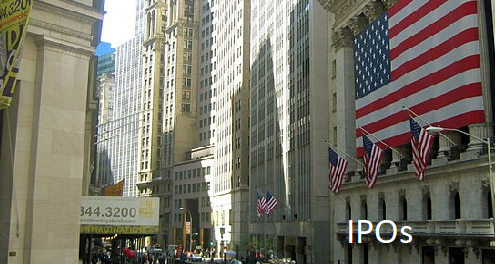
(Photo : wikimedia.org)
- The S&P 500 and Dow Jones hit record highs due to strong financial company earnings and inflation data.
- JPMorgan Chase, Wells Fargo, and BlackRock led the rally with higher-than-expected Q3 profits.
- Market optimism was boosted by data suggesting moderating inflation, potentially leading to a Fed rate cut.
- Despite challenges, strong earnings and moderate inflation could set the stage for further market gains.
The S&P 500 and the Dow Jones Industrial Average scored record closing highs on Friday, driven by strong quarterly results from major financial companies and the latest inflation data that fueled expectations for a U.S. Federal Reserve rate cut in November.
The S&P 500 Financials index, in particular, emerged as the biggest index points boost for the benchmark, reflecting the significant role of financial stocks in this market rally.
Leading the charge were JPMorgan Chase, Wells Fargo, and BlackRock, all of which reported higher-than-expected third-quarter profits. JPMorgan Chase, in particular, finished the session up 4.4% after raising its annual interest income forecast.
Wells Fargo's shares rallied 5.6% following its profit beat, while BlackRock's stock gained 3.6% after the asset manager reported a record high for assets under management for the third straight quarter.
The strong performance of these financial giants set a positive tone for the earnings season, according to Evan Brown, Portfolio Manager and Head of Multi-Asset Strategy at UBS Asset Management. He noted that when financials do well, it bodes well for the economy and sets a positive tone for earnings releases in other industries in the coming weeks.
Market Optimism and Inflation Data
The market's optimism was further fueled by data from the U.S. Department of Labor, which showed that the Producer Price Index (PPI) for final demand was unchanged on a monthly basis in September, compared to the 0.1% rise expected by economists.
This data, along with a slightly higher than forecast Consumer Price Index (CPI) reading, suggested that inflation might be moderating, which is seen as a condition that could lead the Fed to cut interest rates to support the economy.
The Dow Jones Industrial Average rose 409.74 points, or 0.97%, to 42,863.86, the S&P 500 gained 34.98 points, or 0.61%, to 5,815.03 and the Nasdaq Composite gained 60.89 points, or 0.33%, to 18,342.94. For the week, the S&P 500 added 1.1% while the Dow climbed 1.2% and the Nasdaq added 1.1% with all three notching their fifth weekly gain in a row.
However, the market's rally was not without its challenges. Tesla shares slumped 8.8% after the EV maker unveiled its long-awaited robotaxi but did not provide details on how fast it could ramp up production or deal with potential regulatory hurdles. Despite this, the S&P 500 financial services stocks added 1.95%, and the S&P 500 Banks index added 4.2%, hitting its highest level since February 2022.
Historical Trends and Market Performance
Historically, strong earnings from major financial institutions have often been a positive sign for the broader market. For instance, in the aftermath of the 2008 financial crisis, robust earnings from major banks were a key factor in the market's recovery.
Similarly, during the dot-com boom of the late 1990s, strong earnings from technology companies drove the market to new highs. The current situation appears to be a combination of these historical trends, with strong earnings from financial companies driving the market higher, while the latest inflation data fuels expectations for a rate cut from the Federal Reserve.









